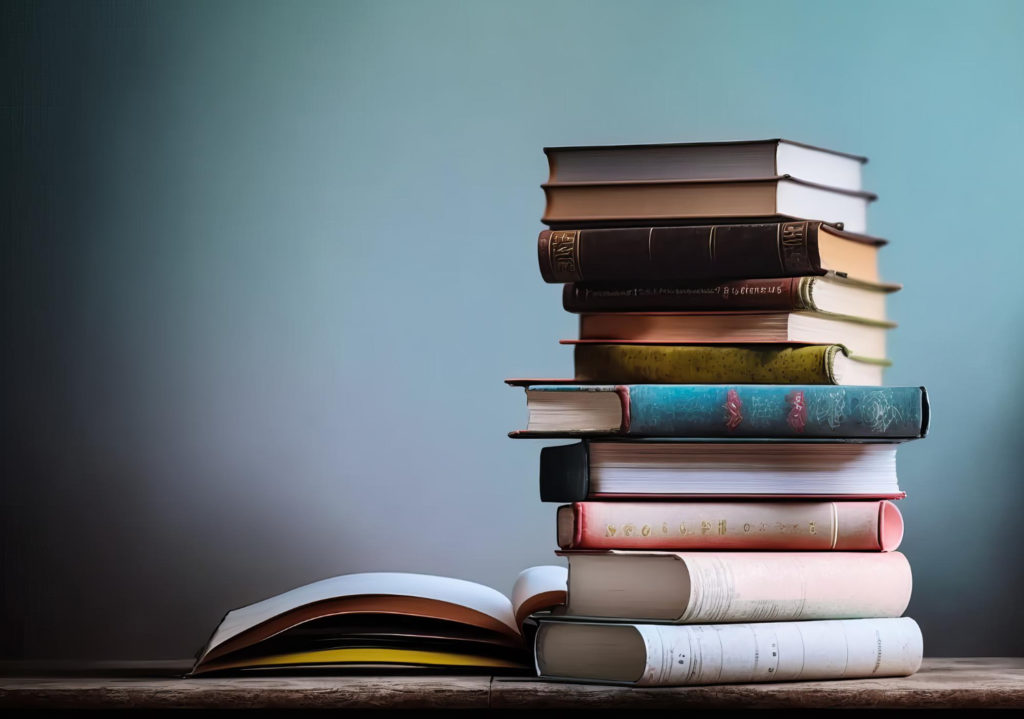The 6th chapter of Chikitsasthana of Sushruta Samhita is named as Arśas Cikitsitam Adhyaya. This chapter deals with Treatment of Piles / Haemorrhoids.
अथातोऽर्शसांचिकित्सितंव्याख्यास्यामः।।१।।
यथोवाचभगवान्धन्वन्तरिः।।२।|
We will now expound Arsas cikitsita – treatment of piles / haemorrhoids; as revealed by the venerable Dhanvantari.
Table of Contents
Arśas cikitsopāya – methods of treatment
चतुर्विधोऽर्शसांसाधनोपायःतद्यथा – भेषजंक्षारोऽग्निःशस्त्रमिति।तत्र,अचिरकालजातान्यल्पदोषलिङ्गोपद्रवाणिभेषजसाध्यानि,मृदुप्रसृतावगाढान्युच्छूितानिक्षारेण,कर्कशस्थिरपृथुकठिनान्यग्निना,तनुमूलान्युच्छ्रितानिक्लेदवन्तिचशस्त्रेण।तत्रभेषजसाध्यानामर्शसामदृश्यानांचभेषजंभवति,क्षाराग्निशस्त्रसाध्यानांतुविधानमुच्यमानमुपधारय।।३।।
Arsas Cikitsopaya – Below mentioned are the four important methods of treating piles –
- Bhesaja prayoga – use of medicines
- Ksarakarma – use of caustic alkalies,
- Agnikarma – use of fire / branding and
- Sastrakarma – use of sharp instruments / surgery
Bheshaja – Piles curable by medicines – Below mentioned kinds of piles are treatable with medicines –
– those which are not chronic,
– those having mild aggravation of doshas
– those having mild symptoms and
– those having mild / few complications
Kshara – Piles curable by alkali – Piles should be treated by application / administration of kshara – alkali (alkaline cautery) if they are –
– soft,
– broad,
– deep seated and
– bulged up
Agni – Piles curable by fire – The piles with below mentioned features qualifies to be treated with fire (branding / thermal cautery) –
– rough,
– immovable,
– big and
– hard
Shastra – Piles curable by surgery – The piles with the below mentioned features should be treated with sharp instruments (i.e. by surgery) –
– having thin roots,
– are bulged up and
– exuding fluids
Bheshaja i.e. treatment by administration of medicines alone is sufficient for the piles –
– which are treatable with medicines and
– those which are invisible
After this, the treatment of piles which are treatable by use of kshara – alkali, agni – fire and shastra – sharp instruments shall be described. Please listen to the same attentively.
Kșāraprayoga – Alkali cauterisation
तत्रबलवन्तमातुरमर्शोभिरुपद्रुतमुपस्निग्धंपरिस्विन्नमनिलवेदनाभिवृद्धिप्रशमार्थस्निग्धमुष्णमल्पमन्नंद्रवपायंभुक्तवन्तमुपवेश्यसंवृतेशुचौदेशेसाधारणेव्यभ्रेकालेसमेफलकेशय्यायांवाप्रत्यादित्वगुदमन्यस्योत्सङ्गेनिषण्णपूर्वकायमुत्तानंकिञ्चिदुन्नतकटिकंवस्त्रकम्बलकोपविष्टंयन्त्रणशाटकेनपरिक्षिप्तग्रीवासक्थिपरिकर्मिभिःसुपरिगृहीतमस्पन्दनशरीरंकृत्वाततोऽस्मैघृताभ्यक्तगुदायघृताभ्यक्तंयन्त्रमृज्वनुमुखंपायौशनैःशनै : प्रवाहमाणस्यप्रणिधाय,प्रविष्टेचार्शोवीक्ष्य,शलाकयोत्पीड्य,पिचुवस्त्रयोरन्यतरेणप्रमृज्य,क्षारंपातयेत्पातयित्वाचपाणिनायन्त्रद्वारंपिधायवाक्च्छतमात्रमुपेक्षेत,ततःप्रमृज्यक्षारबलंव्याधिबलंचावेक्ष्यपुनरालेपयेत्,अथार्शःपक्वजाम्बवप्रतीकाशमवसन्नमीषन्न-तमभिसमीक्ष्योपावर्तयेत्,क्षारंप्रक्षालयेद्धान्याम्लेनदधिमस्तुशुक्तफलाम्लैर्वा,ततोयष्टीमधुकमिश्रेणसर्पिषानिर्वाप्ययन्त्रमपनीयोत्थाप्यातुरमुष्णोदकोपविष्टंशीताभिरद्भिःपरिषिञ्चेत्,अशीताभिरित्येके,ततोनिर्वातमागारंप्रवेश्याचारिकमादिशेत् ; सावशेषंपुनर्दहेत् ; एवंसप्तरात्रात्सप्तरात्रादेकैकमुपक्रमेत ; तत्रबहुषुपूर्वंदक्षिणंसाधयेत्,दक्षिणाद्वामं,वामात्पृष्ठजं,ततोऽग्रजमिति।।४।।
Snehana and Swedana – Oleation and sedation therapies are first administered to the strong patient suffering from piles during temperate season. It should be done at the appropriate time of the day when the sky is clear (not filled with clouds).
Diet – The patient is allowed to eat a small quantity of liquid food which is unctuous and warm so as to mitigate pain caused by aggravated vata.
Positioning of patient for treatment – The patient is now made to lie down with his face up, on a cot or plank / table placed at a covered and clean place such that his anal orifice / rectum faces sunlight. His upper part of the body should be resting on the table. His waist should be slightly raised by placing cloth pads or blankets underneath his waist. His knees should be folded and kept erect and the thighs tied tightly with binding ropes and held in position by attendants in such a way that the patient cannot make any movements.
Now, the anal opening and anus of the patient is lubricated with ghee. Arshoyantra i.e. anal speculum is also smeared with the ghee so that it is easy for it to be introduced into the anus. The instrument is now pushed into the anus slowly, gradually and straight while the patient bears down (straining). After the instrument has entered into the anus, the physician should observe the pile mass and it shall be raised by a rod like instrument. The pile mass is now massaged with sterile cotton swab or cloth (gauze). Following this, Kshara is placed / applied on the pile mass.
The physician should keep the mouth (external opening) of the arshoyantra (speculum) closed by his hand for a period of one hundred matra kala, after applying the alkali over the pile mass. One Matra kala is the time required for pronouncing a vowel.
Afterwards the pile mass is kneaded with a sterile cloth. Following this, kshara is once again applied on the pile mass after having considered the strength of the kshara and the disease.
When to stop applying the Kshara?
The physician should stop applying kshara on the pile mass when –
– the pile mass appears bluish black in color, resembling a ripe fruit of Jambu,
– is dull in look and
– drooping slightly
Removal of Kshara – Next, the kshara is cleansed using one of the below mentioned things –
– dhanyamla – fermented gruel,
– dadhi mastu – whey of curd,
– sukta – vinegar or
– phalāmla – juice of sour fruits
Later, the pile mass should be bathed with ghee mixed with Yashtimadhuka – licorice. Following this, the speculum is slowly removed.
Postoperative procedures
The patient should be allowed to sit in a tub filled with warm water for a while. Alternatively cold water should be sprinkled over the patient’s anus / rectum. According to some scholars, the water used for sprinkling over the anus should not be very cold. Therefore, lukewarm water should be used for the same.
Next, the patient is shifted to a room devoid of breeze. He is also given instructions regarding his foods and activities that he should follow.
In this way, each pile mass is separately treated, each at a period of seven days.
Order of treating piles in presence of multiple pile masses – When many pile masses are present, they shall be treated in the below mentioned order –
– the mass on the right side should be treated first
– next, the pile mass on the left side should be treated
– the pile mass at the back i.e. deep inside should be treated next and finally the mass present in the front should be treated
तत्रवातश्लेष्मनिमित्तान्यनिक्षाराभ्यांसाधयेत्,क्षारेणैवमृदुनापित्तरक्तनिमित्तानि।।५।।
Agni i.e. thermal cautery should be used to treat piles which are caused by aggravated vata and kapha.
Piles produced by pitta and rakta should be treated with milk alkalis.
Kșāra dagdha laksana – Features of burning by alkalies
तत्रवातानुलोम्यमन्नरुचिरग्निदीप्तिाघवंबलवर्णोत्पत्तिर्मनस्तुष्टिरितिसम्यग्दग्ध-लिङ्गानि,अतिदग्धेतुगुदावदरणंदाहोमूर्छाज्वरःपिपासाशोणितातिप्रवृत्तिस्त -निमित्ताश्चोपद्रवाभवन्ति,ध्यामाल्पव्रणताकण्डूरनिलवैगुण्यमिन्द्रियाणामप्रसादोविकारस्यचाशान्तिहीनदग्धे।।६।।
Samyak dagdha lakshana – Below mentioned are the symptoms of proper burning by alkali –
– downward movement of flatus,
– desire for food,
– increase of hunger,
– feeling of lightness,
– restoration of strength and colour (of the body) and contentment in mind
Ati dagdha Lakshana – Below mentioned are the symptoms of over burning by alkali –
– tears in the anus,
– burning sensation,
– fainting,
– fever,
– thirst,
– heavy bleeding and complications consequent to it
Hina dagdha Lakshanas – Below mentioned are the symptoms of inadequate burning by alkali –
– pile mass becomes black, developing a small wound,
– itching,
– irregularity of vāta,
– absence of calmness in the sense organs and
– non-mitigation of the disease
Agni karma & sastra karma – thermal cautery and surgery
महान्तिचप्राणवतश्छित्त्वादहेत्,निर्गतानिचात्यर्थंदोषपूर्णानियन्त्राद्विनास्वेदाभ्यङ्गस्नेहावगाहोपनाहवित्रावणालेपक्षाराग्निशस्त्रैरुपाचरेत्प्रवृत्तरक्तानिचरक्तपित्तविधानेन,भिन्नपुरीषाणिचातीसारविधानेन,बद्धवर्चासिस्नेहपानविधानेनोदावर्तविधानेनवा ; एषसर्वस्थानगतानामर्शसांदहनकल्पः।।७।।
The pile masses should be excised (cut) and later the area should be burnt with fire if they are big in size and the patient is strong. Putting it short, both surgery and fire cautery should be done together.
Below mentioned therapies should be done for the pile mass which protrudes out greatly and is filled with increased doshas taking care that the speculum is not used –
– sudation,
– anointing with oils
– oleation
– tub-bath
– warm poultices
– bloodletting
– topical application of medicines
– use of alkali
– use of fire / thermal cautery and
– surgery
Arshas in which there is bleeding should be treated on lines of treating raktapitta.
If there is elimination of liquid faeces along with arshas, it should be treated on the lines of treating atisara – diarrhoea.
If constipation is present in a patient of arshas, he should be treated either with oleation therapy or on the lines of treatment of Udavarta – upward movement of vata / reverse peristalsis.
Thus, the methods of burning / cauterization by both kshara and agni as applicable for arshas located in all the places has been explained.
आसाद्यचदर्वीकूर्चकशलाकानामन्यतमेनक्षारंपातयेत्।भ्रष्टगुदस्यतुविनायन्त्रेणक्षारादिकर्मप्रयुञ्जीत।
Kshara – caustic alkali should be applied over the pile mass which is incurable. The pile mass is burnt using alkali. It should be applied with a handle of a ladle or similar such instruments which is broad and can also hold more quantity of kshara.
Kshara should be applied using anal speculum in case of Bhrasta Guda – prolapse of rectum.
Hita ahara – suitable foods
सर्वेषुचशालिषष्टिकयवगोधूमान्नंसर्पिःस्निग्धमुपसेवेतपयसानिम्बयूषेणपटोलयूषेणवा,यथादोषंशाकैर्वास्तूकतण्डुलीयकजीवन्त्युपोदिकाश्वबलाबालमूल -कपालयसनचिल्लीचुच्चूकलायवल्लीभिरन्यैर्वा।यच्चान्यदपिस्निग्धमग्निदीपनमर्शोघ्नंसृष्टमूत्रपुरीषंचतदुपसेवेत।।८।।
Foods prepared from śāli, șaștika, yava or godhūma added with ghee should be consumed (by patients) in all kinds of arshas. This food should be consumed with one of the below mentioned –
– milk or
– soup of nimba – Azadirachta indica (neem) or patola – Trichosanthes dioica, pointed gourd
– vegetables appropriate to mitigate the dosha involved, like – vāstuka, tandulīyaka, jīvañtī, upodikā, aśvabalā, tender mülaka, palañkya, asana, cilli, cuccū, kalāyavallī or similar others
Any other foods which have the below mentioned properties shall be used –
– those which are unctuous,
– those which kindle digestive fire (enhance capacity of digestion),
– those which can cure piles and
– those which help in easy elimination of urine and faeces
दग्धेषुचार्श: स्वभ्यक्तोऽनलसन्धुक्षणार्थमनिलप्रकोपसंरक्षणार्थंसामान्यतःक्रियापथमुपसेवेत।विशेषतस्तुवातार्श : सुसीषिचवातहरदीपनीयसिद्धानिहिङ्ग्वादिभिश्शूर्णैःप्रतिसंसृज्यपिबेत्,पित्ताश : सुपृथक्पादीनांकषायेणदीपनीयप्रतीवापचस्नेहादीनांसर्पिः,शोणितार्श : सुमञ्जिष्ठामुरुङ्गयादीनांकषायेपाचयेत्,श्लेष्मार्श : सुसुरसादीनांकषाये।उपद्रवांश्चयथास्वमुपाचरेत्।।९।।
General therapies like snehana – oleation etc. should be adopted and adhered to in arshas which have been subjected to cauterization (by kshara or agni) and even in other kinds of arshas. The intention is to kindle the agni and to mitigate aggravation of vata.
Piles produced by vata – In piles produced by vata, medicated ghee prepared with vatahara – vata mitigating and dipaniya – digestive fire / hunger enhancing herbs added with Hingvadi Curna etc. should be specifically administered.
Piles produced by pitta – In piles produced by pitta, medicated ghee prepared with decoction of Prthakparni added with Dipaniya herbs (herbs which kindle digestive fire) should be specifically administered.
Piles produced by rakta – In piles produced by aggravated rakta – blood, medicated ghee processed with decoction of Manjistha, Murungi etc. should be administered.
Piles produced by kapha – In piles produced by kapha, medicated ghee prepared with decoction of Surasadi Gana group of herbs should be specifically administered.
Complications of Arshas should be treated appropriately.
Nirdesana – warning
परंचयत्नमास्थायगुदेक्षाराग्निशस्त्राण्यवचारयेत्,तद्विभ्रमाद्धिपाण्ड्यशोफदाहमदमूर्छाटोपानाहातीसारप्रवाहणानिभवन्तिमरणंवा।।१०।।
The physician or surgeon should apply kshara – caustic alkali, agni – fire and shastra – sharp instruments into the anus with utmost care and skill.
When these treatments are inappropriately done, they would produce the below mentioned symptoms / complications –
– impotence,
– swelling,
– burning sensation,
– toxicity,
– fainting,
– gurgling noises in the abdomen,
– flatulence,
– diarrhoea,
– tenesmus or
– even death
Arso yantra – rectal speculum
अतऊर्ध्वंयन्त्रप्रमाणमुपदेक्ष्यामः – तत्रयन्त्रंलौहंदान्तंशार्ङ्गवाक्षंवागोस्तनाकारंचतुरङ्गुलायतंपञ्चाङ्गुलपरिणाहंपुंसां,षडङ्गुलपरिणाहंनारीणांतलायतं ; तद्द्विच्छिद्रंदर्शनार्थम्,एकछिद्रंतुकर्मणि ; एकद्वारेहिशस्त्रक्षा-राग्नीनामतिक्रमोनभवति;छिद्रप्रमाणंतुत्र्युङ्गलायतमङ्गुष्ठोदरपरिणाहं,यदङ्गुलमवशिष्टंतस्यार्धाङ्गलादधस्तादर्धाङ्गुलोच्छ्रितोपरिवृत्तकर्णिकम् ; एषयन्त्राकृतिसमासः।।११।।
Now, the measurements of Arsho Yantra i.e. rectal speculum shall be described.
Materials used – Arso Yantra should be prepared with any one of the below mentioned –
– metal (iron),
– tusk (ivory) or
– horn of animals or
– tree (wood)
Shape – The shape of the Arso Yantra should be in the shape of a cow’s nipple.
Dimensions –
– for usage in men – 4 angula (8cm) in length and 5 angula (10 cm) in circumference
– for usage in women – 6 angula (12 cm) in circumference and length of palm (4 angula – 8 cm approximately).
Types of Arso Yantra – Arso Yantra is of two kinds –
- that having two slits for inspection and
- that having only one slit for doing treatment i.e. for application of kshara and shastra
Improper application of shastra, kshara or agni will not happen if the instrument having one slit is used.
Size of the slit –
– 3 angula (6cm) in length
– size of middle of the thumb – in circumference
– about ½ angula (1 cm) – in the remaining portion of the instrument
A round elevated karnika i.e. ridge of about ½ angula (1 sm) in height should be made below the front orifice / opening of the instrument. This will limit the instrument from getting deep into the rectum when it is inserted.
Thus, the measurement of arso yantra – anal speculum instrument has been explained in brief.
Alepa – application of medicinal pastes on pile masses
अतऊर्ध्वमर्शसामालेपान्वक्ष्यामः – स्नुहीक्षीरयुक्तंहरिद्राचूर्णमालेपःप्रथमः,कुक्कुटपुरीषगुञ्जाहरिद्रापिप्पलीचूर्णमितिगोमूत्रपित्तपिष्टोद्वितीयः,दन्तीचित्रकसुवर्चिकालागलीकल्कोवागोपित्तपिष्टस्तृतीयः,पिप्पलीसैन्धवकुष्ठशिरीषफलकल्कःस्नुहीक्षीरपिष्टोऽर्कक्षीरपिष्टोवाचतुर्थः,कासीसहरितालसैन्धवाश्वमारकविडङ्गपूतीककृतवेधनजम्ब्वर्कोत्तमारणीदन्तीचित्रकालर्कस्नुहीपयःसुतैलंविपक्वमभ्यञ्जनेनार्शःशातयति।।१२।।
Now, the use of different Alepa – external application to be used for piles shall be described –
– 1st Recipe – Powder of Haridra – Curcuma longa (turmeric) mixed with milk / latex of Snuhi – Euphorbia neriifolia
– 2nd Recipe – Kukkuta Purisa (faeces of cock), Gunja – Abrus precatorius, Haridra – Curcuma longa and Pippali – Piper longum, all macerated with urine of cow
– 3rd Recipe – Paste of Danti – Baliospermum montanum, Citraka – Plumbago zeylanica, Suvarcica – Saltpetre / Tribulus terrestris (?) and Langali – Gloriosa superba or Go-Pitta / Go-Rochana (oc gall)
– 4th Recipe – Pippali – Piper longum, Saindhava – rock salt, Kustha – Saussurea lappa and Sirisa phala – fruit of Albizia lebbeck macerated with latex of Snuhi – Euphorbia neriifolia or Arka – Calotropis gigantea
Medicated oil is prepared with decoction of below mentioned ingredients cooked in the usual way –
– kāsīsa – green vitriol
– haritāla – orpiment
– saindhava – rock salt
– aśvamäraka – Nerium indicum
– vidanga – Embelia ribes
– pūtikā – Holoptelea integrifolia
– krtavedhana – Luffa acutangula
– jambū – Syzygium cumini
– arka – Calotropis gigantea
– uttamāraṇī – Achyranthes aspera
– danti – Baliospermum montanum
– citraka – Plumbago zeylanica
– alarka – Solanum trilobatum
– snuhikșira – latex of Euphorbia neriifolia and
– taila – oil
When the pile mass is anointed with this oil, it falls off.
Yapana yoga – recipes for continuous use
अतऊर्ध्वंभेषजसाध्येष्वदृश्येष्वर्श :सुयोगान्यापनार्थंवक्ष्यामः – प्रातःप्रातर्गुडहरीतकीमासेवेत,ब्रह्मचारीगोमूत्रद्रोणसिद्धंवाहरीतकीशतंप्रातःप्रातर्यथाबलंक्षौद्रेण,अपामार्गमूलंवातण्डुलोदकेनसक्षौद्रमहरहः,शतावरीमूलकल्कंवाक्षीरेण,चित्रकचूर्णयुक्तंवासीधुंपरायं,भल्लातचूर्णयुक्तंवासक्तुमन्थमलवणंतक्रेण,कलशेवाऽन्तश्चित्रकमूलकल्कावलिप्तेनिषिक्तंतक्रमालमनम्लंवापानभोजनेषूपयुञ्जीत,एषएवभार्यास्फोतायवान्यामलकगुडूचीषुतक्रकल्पः,पिप्पलीपिप्पलीमूलचव्यचित्रकविडङ्गशुण्ठीहरीतकीषुचपूर्ववदेव,निरन्नोवातक्रमहरहासमुपसेवेत,शृङ्गवेरपुनर्नवाचित्रककषायसिद्धंवापयः,कुटजमूलत्वक्फाणितांवापिप्पल्यादिप्रतीवापंक्षौद्रेण,महावातव्याध्युक्तंहिङ्ग्वादिचूर्णमुपसेवेततक्राहारःक्षीराहारोवा,क्षारलवणांश्चित्रकमूलक्षारोदकसिद्धान्वाकुल्माषान्भक्षयेत्,चित्रकमूलक्षारोदकसिद्धंवापयःपलाशतरुक्षारसिद्धवापलाशतरुक्षारसिद्धान्वाकुल्माषान्,पाटलापा -मार्गबृहतीपलाशक्षारंवापरिस्त्रुतमहरहघृतसंसृष्टं,कुटजबन्दाकमूलकल्कंवतक्रेण,चित्रकपूतीकनागरकल्कंवापूतीकक्षारेण,क्षारोदकसिद्धंवासर्पिःपिप्पल्यादिप्रतीवापं,कृष्णतिलप्रसृतंप्रकुञ्चंवाप्रातःप्रातरुपसेवेतशीतोदकानुपानम् ; एभिरभिवर्धतेऽग्निरांसिचोपशाम्यन्ति।।१३।।
Further, recipes which can be used for longer periods of time for piles which are curable by medicines and also those which are invisible (and hence curable through medicines) will be described –
– Guda Haritaki – a combination of jaggery and Terminalia chebula, should be consumed in the morning, every day.
– One hundred Haritaki – Terminalia chebula cooked in one drona quantity of cow’s milk should be consumed every morning by the patient who is maintaining celibacy (avoids copulation). Honey should be mixed in the recipe. The patient should consume this recipe considering his strength (digestion capacity) or
– Roots of Apamarga – Achyranthes aspera should be macerated and taken mixed in rice wash every day, after adding milk to it or
– Paste of roots of Shatavari – Asparagus racemosus should be consumed mixed with milk or
– Powder of Citraka – Plumbago zeylanica mixed in half its quantity of sīdhu; or
– Powder of Bhallataka – Semecarpus anacardium should be consumed mixed with sakthu mañtha (groats) along with buttermilk devoid of salt; or
– Paste of Chitrakamula i.e. roots of Plumbago zeylanica should be smeared to the inside of a pot. Sour or unsoured buttermilk should be placed in this pot and left in place. The patient should use this buttermilk for drinking. Alternatively it shall be consumed with food.
– Similarly, buttermilk processed with bhārñgī – Clerodendrum serratum, āsphoța – Jasminum angustifolium / Clitoria ternatea, yavāni – Trachyspermum ammi, āmalaka – Emblica officinalis and guducī – Tinospora cordifolia; or with pippali – Piper longum, pippalīmūla – roots of Piper longum, cavya – Piper retrofractum, citraka – Plumbago zeylanica, vidanga – Embelia ribes, suņțhī – Zingiber officinale and harītaki – Terminalia chebula may be used or
– The patient should be advised to consume only buttermilk without taking any other foods for a period of one month, or
– Milk boiled with śrñgavera – Zingiber officinale, punarnavā – Boerhavia diffusa, citraka – Plumbago zeylanica should be consumed; or
– Phāṇita (mollases) prepared with roots and bark of kutaja – Holarrhena antidysenterica added with powder of herbs belonging to pippalyādigana group of herbs mixed with honey should be consumed; or
– Hiñgvādi cūrna described in the treatment of vātavyadhi should be used daily while consuming buttermilk or milk predominantly as food or
– Kulmasa i.e. pulses cooked with alkali solution and added with Kshara – Yava Kshara (alkali obtained from whole plant of barley), Lavana – Saindhava Lavana / rock salt and Chitraka Mula – roots of Plumbago zeylanica should be consumed or
– Milk boiled with ash of Palasha tree – Butea monosperma should be used for drinking or
– Kulmāsa pulses cooked with ash of palāśa – Butea monosperma; alkali (ash) of pāțalā – Stereospermum suaveolens, apāmārga – Achyranthes aspera, brịhati – Sonanum indicum and palāśa – Butea monosperma well filtered many times and mixed with ghee should be consumed everyday;
– Paste of kutaja – Holarrhena antidysenterica and roots of vañdāka – Dendrophthoe falcata mixed with buttermilk should be consumed or
– Paste of citraka – Plumbago zeylanica, pūtīka – Holoptelea integrifolia and nagara – Zingiber officinale should be consumed along with solution of ash of Putika – Holoptelea integrifolia or
– Ghee should be prepared with solution of yavakṣāra – alkali obtained from the whole plant of barley, added with powder of herbs belonging to Pippalyādi Gaṇa group of herbs while cooking and consumed or
– Paste of Krsna Tila – black sesame seeds should be consumed in a dose of 1 prastha – 80 grams or 1 prakunca – 40 grams dose. This recipe should be taken every morning followed by drinking cold water.
These recipes would increase agni – digestive fire and mitigate / cure arshas – piles.
Dvipañcamūladi āsava
द्विपञ्चमूलीदन्तीचित्रकपथ्यानांतुलामाहृत्यजलचतुर्दोणेविपाचयेत्,ततःपादावशिष्टंकषायमादायसुशीतंगुडतुलयासहोन्मिश्यघृतभाजनेनिक्षिप्यमासमुपेक्षेतयवपल्ले,ततःप्रातःप्रातर्मात्रांपाययेत,तेनाग्रहणीदोषपाण्डुरोगोदावर्तारोचकानभवन्तिदीप्तश्चाग्निर्भवति।।१४।।
One tula – 4kg each of the below mentioned herbs should be collected –
– Two Pancamulas – Brhat and Laghu Pancamulas (both together constituting Dasamula)
– Danti – Baliospermum montanum,
– Chitraka – Plumbago zeylanica and
– Pathya – Terminalia chebula
These herbs should be boiled in four drona – 40.94 kg of water and reduced to a quarter so as to prepare its Kashaya – decoction.
This Kasaya should be allowed to cool down. To the cooled Kashaya, 1 tula – 4kg Guda – jaggery is added and is poured into a pot whose inside has been smeared with ghee.
Now, the pot is kept hidden in a heap of barley for a period of one month.
Later, after one month, it is taken out and the medicine consumed every day, in the morning in suitable doses.
Piles, diseases of the duodenum, anaemia, upward movement of vata (reverse peristalsis), and anorexia etc. diseases will not develop when this medicine is consumed. The digestive fire will also get augmented.
Dhātryārişta
पिप्पलीमरिचविडङ्गैलवालुकलोध्राणांद्वेद्वेपले,इन्द्रवारुण्याःपञ्चपलानि,कपित्थमध्यस्यदश,पथ्याफलानामधप्रस्थःप्रस्थोधात्रीफलानां,एतदैकथ्यंजलचतुर्दोणेविपाच्य,पादावशेषंपरिस्राव्य,सुशीतंगुडतुलाद्वयेनोन्मिश्य,घृतभाजनेनिःक्षिप्य,पक्षमुपेक्षेतयवपल्ले ; ततःप्रातःप्रातर्यथाबलमुपयुञ्जीत।एषखल्वरिष्टःप्लीहाग्निसङ्गार्थोग्रहणीहृत्पाण्डुरोगशोफकुष्ठगुल्मोदरकृमिहरोबलवर्णकरश्चेति।।१५।।
Ingredients –
– 2 pala (40 grams) each of – Pippali – Piper longum, Maricha – Piper nigrum (black pepper), Vidanga – Embelia ribes and Elavaluka – Prunus cerasus
– 5 pala (200 grams) – Iñdravāruni,
– 10 pala (400 grams) – Kapittha madhya – pulp of Limonia acidissima,
– ½ Prastha (320 grams) – Pathya phala / Haritaki – Terminalia chebula and
– 1 Prastha (640 grams) – Dhatri phala / Amalaki – Emblica officinalis
The above said ingredients should be boiled in 4 drona (40.96 kg) of water and reduced to one quarter so as to prepare its Kashaya – decoction.
When the Kashaya gets cooled, 2 tula (4kg) guda – jaggery is added to it and all these are now poured into a pot whose interior has been smeared with ghee. This pot is concealed in a heap of barley for a fortnight.
Later, the pot is removed from the heap. The medicine is ready to be consumed and is called Dhatryarishta. This medicine should be consumed every morning in a suitable dose, as suited to one’s ability.
This Dhatryarishta cures the below mentioned conditions –
– enlargement of spleen
– dyspepsia
– piles
– diseases of the duodenum
– anaemia
– dropsy
– leprosy / skin diseases
– abdominal tumors
– enlargement of abdomen and
– intestinal worms
It also bestows strength and colour / complexion.
तत्र,वातप्रायेषुस्नेहस्वेदवमनविरेचनास्थापनानुवासनमप्रतिषिद्धं,पित्तजेषुविरेचनम्,एवंरक्तजेषुसंशमनं,कफजेषुशृङ्गवेरकुलत्थोपयोगः,सर्वदोषहरंयथोक्तंसर्वजेषु,यथास्वौषधिसिद्धंचपयःसर्वेष्विति।।१६।।
Vataja Arshas – In piles caused due to predominant aggravation of vata, the below mentioned therapies are not prohibited i.e. they can be done –
– oleation
– sudation
– emesis
– purgation
– decoction enema and
– oil / unctuous enema
Pittaja Arshas – In piles caused due to predominant aggravation of pitta, virechana – purgation has not been prohibited i.e. it can be readily considered and done.
Raktaja Arshas – In piles caused due to predominant aggravation of rakta – blood, Samshamana Chikitsa – palliative therapies should be done.
Kaphaja Arshas – In piles caused by predominant aggravation of kapha, Srngavera – Zingiber officinale (ginger) and Kulattha – horse gram should be used.
Sarvaja / Tridoshaja Arshas – In piles caused by aggravation of all three doshas, all treatments (to combat the aggravated tridoshas) should be done.
Also, in all kinds of arshas, one should consume milk boiled with appropriate herbs.
Bhallātaka prayoga – Use of Bhallataka (Semecarpus anacardium)
अतऊर्ध्वंभल्लातकविधानमुपदेक्ष्यामः – भल्लातकानिपरिपक्वान्यनुपहतान्याहृत्यततएकमादायद्विधात्रिधाचतुर्धावाछेदयित्वाकषायकल्पेनविपाच्यतस्यकषायस्यशुक्तिमनुष्णांघृताभ्यक्ततालुजिह्वौष्ठःप्रातःप्रातरुपसेवेत,ततोऽपराणेक्षीरंसर्पिरोदनइत्याहारः,एवमेकैकंवर्धयेद्यावत्पञ्चति,ततःपञ्चपञ्चाभिवर्धयेद्यावत्सप्ततिरिति,प्राप्यचसप्ततिभपकर्षयेद्भूयःपञ्चपञ्चयावत्पञ्चेति,पञ्चभ्यस्त्वेकैकंयावदेकमिति।एवंभल्लातकसहस्रमुपयुज्यसर्वकुष्ठार्शोभिर्विमुक्तोबलवानरोगःशतायुर्भवति।।१७।।
Further, the method of using Bhallataka – Semecarpus anacardium in the treatment of Arshas – piles will be described.
Firstly, well ripened Bhallātaka fruits which are not spoiled should be collected. Each Bhallataka fruit is then cut into two, three or four pieces. These pieces are boiled in water following the procedure of preparing Kashaya – decoction.
The patient should drink this decoction every morning in a dose of one sukti (20 grams). The decoction should be cold at the time of drinking. Care should be taken that the patient should smear ghee over his palate, tongue and lips before drinking the decoction.
As a diet, the patient should take milk and cooked rice, added with ghee in the afternoon.
While taking in this manner, the number of Bhallataka should be increased by one fruit every day until it becomes fifty. After this, the number should be increased by five Bhallataka fruits every day till it becomes seventy. Later, the reverse pattern should be followed and the number of Bhallataka fruits should be gradually tapered.
Once the number of Bhallataka fruits reach seventy numbers, the number of Bhallataka fruits should be reduced by five fruits every day until it becomes fifty. Then onwards, the intake of Bhallataka fruits should be reduced by one fruit every day till the number reaches only one fruit (as was started).
In this manner, in the entire circle of increasing and decreasing the consumption of Bhallataka fruits, one would have consumed a total of one thousand Bhallataka fruits. By this, he would get cured of all kinds of kustha – skin disorders / leprosy and arshas – piles. He would also become strong and live for a total span of one hundred years, i.e. it promotes longevity.
द्विवणीयोक्तेनविधानेनभल्लातकनिश्च्युतितंस्नेहमादायंप्रातःप्रातःशुक्तिमात्रमुपयुञ्जीत,जीर्णेपूर्ववदाहारःफलप्रकर्षश्च।भल्लातकमज्जभ्योवास्नेहमादायापकृष्टदोषःप्रतिसंसृष्टभक्तोनिवातमागारंप्रविश्ययथाबलंप्रसृतिंप्रकुञ्चंवोपयुञ्जीत,तस्मिञ्जीर्णेक्षीरंसर्पिरोदनइत्याहारः,एवंमासमुपयुज्यमासत्रयमादिष्टाहरोरक्षेदात्मानं; ततःसर्वोपतापानपहृत्यवर्णवान्बलवान्श्रवणग्रहणधारणशक्तिसंपन्नोवर्षशतायुर्भवति,मासेमासेचप्रयोगेवर्षशतंवर्षशतमायुषोऽभिवृद्धिर्भवति,एवंदशमासानुपयुज्यवर्षसहस्रायुर्भवति।।१८।।
Oil of Bhallataka – Oil is extracted and obtained from fruits of Bhallataka in the method described in the first chapter of Chikitsa Sthana – Dvivraniya Cikitsa. This oil is consumed in a dose of one sukti (20 grams) every morning. Once the oil gets digested, food described earlier should be consumed with more quantities of fruits.
Oil obtained from Bhallataka fruit marrow may be consumed in the dose of 1 prastha (80 grams) or 1 prakunca (40 grams) by the person –
– who has been cleared of the doshas i.e. the doshas have been expelled from the body,
– who is following proper diet regimen and
– is living in a house / room devoid of breeze
Once this medicine gets digested, he should consume milk and boiled rice added with ghee.
In this manner Bhallataka should be used for one month while following the dietetic regimen for three months. Also, one should protect oneself from anger etc.
Benefits – By doing so, one would –
– get rid of all diseases,
– attain good complexion / colour,
– gain good strength and
– gain capacity for good hearing (sound perception), comprehension and memory and
– live for one hundred years (promotes longevity)
Consumption of this recipe for one month would enhance the life span by one hundred years. Like this, for every month consumption of this recipe, the lifespan would increase by one hundred years. If the person consumes this recipe for a time period of ten months, one would be bestowed with a lifespan of one thousand years.
भवन्तिचात्र –
Some verse here –
यथासार्वाणिकुष्ठानिहतःखदिरबीजको।।
तथैवाासिसर्वाणिवृक्षकारुष्करौहतः।।१९।।
हरिद्रायाःप्रयोगेणप्रमेहाइवषोडश।।
क्षारागीनातिवर्तन्तेतथादृश्यागुदोद्भवाः।।२०।।
घृतानिदीपनीयानिलेहायस्कृतयःसुरा।।
आसवश्चप्रयोक्तव्यावीक्ष्यदोषसमुच्छ्रितिम्।।२१।।
वेगावरोधस्त्रीपृष्ठयानान्युत्कुटुकासनम्।।
यथास्वंदोषलंचान्नमर्श :सुपरिवर्जयेत्।।२२।।
All the varieties of Kustha – skin disorders / leprosy would get cured by use of Khadira and Bijaka. Similarly, all kinds of Arshas – piles would get cured by use of Aruskara – Bhallataka.
All varieties of Arshas – piles would get cured by use of Kshara – alkali and Agni – fire, just like sixteen kinds of Prameha – diabetes would get cured by use of Haridra – turmeric.
According to the aggravation of doshas in Arshas, the below mentioned can also be brought into use –
– medicated ghee,
– confections,
– recipes of ayas – iron, such as lohasava
Below mentioned should be avoided by patients of Arshas –
– suppression of urges,
– copulation,
– riding animals,
– sitting on heels and
– use of foods that aggravate the doshas
इतिसुश्रुतसंहितायांचिकित्सास्थानेऽर्शश्चिकित्सितंऽध्यायःनामषष्ठो।।६।।
Thus ends the Sixth chapter by name Arśas Cikitsita in Cikitsā Sthäna of Susruta Samhita.









